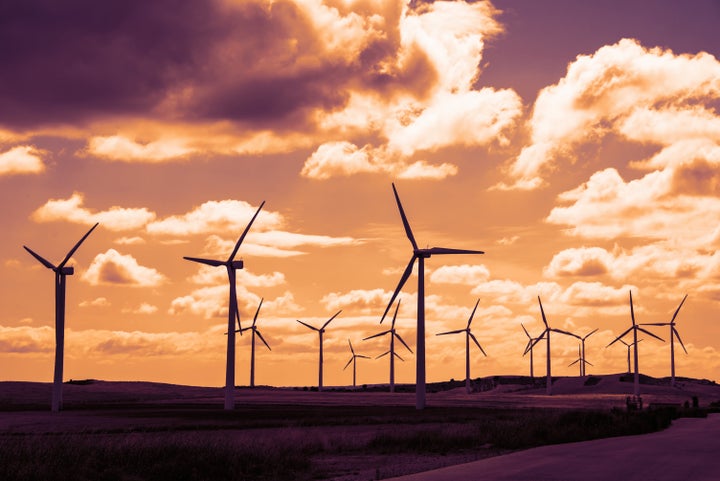
China completed construction on the world’s largest solar farm earlier this year. Shortly afterward, both China and India officially surpassed the United States to become the world leaders in renewable energy investment. This all happened before President Trump withdrew the United States from the Paris Climate Agreement.
“For the sake of our planet’s future, it’s reassuring to know the rest of the world is going on without us in the fight against climate change.”
For the sake of our planet’s future, it’s reassuring to know the rest of the world is going on without us in the fight against climate change. For our economy, however, failing to compete globally in the rapidly growing clean-energy sector represents a self-inflicted wound.
This precise concern is why major American businesses, including Microsoft, Apple, Coca-Cola, Walmart, Google, Exxon, and GE, opposed the withdrawal from the Paris Agreement. They know the growth of clean energy jobs, like wind and solar, is far outpacing fossil fuel jobs. Solar alone is responsible for 1 in 50 new U.S. jobs, and wind turbine technician is the single fastest-growing job in the United States.
If we don’t start increasing our renewable energy investments to keep up with the rest of the world, the sight of other nations like China and India leading the way on the biggest, boldest clean-energy endeavors – and reaping the benefits of the jobs they create – will become routine.
Today Sen. Chris Murphy (D-CT) and I put forward a plan to help our nation reclaim its leadership in the 21st-century clean energy economy. Our bill, called the Green Bank Act, will create a National Green Bank to provide financing support to regional, state, and municipal green banks, which in turn fund clean-energy and energy-efficient projects across the United States. It’s a market-driven plan to both fight climate change and create thousands of jobs in communities across the country.
“Our bill, called the Green Bank Act, will create a National Green Bank to provide financing support to regional, state, and municipal green banks.”
Green banks leverage limited public dollars to drive substantial investment from the private sector. This framework has demonstrated exceptional success at the state level. Six states – Connecticut, New York, California, Vermont, Hawaii, and Rhode Island – have established state green banks.
The Connecticut Green Bank, the nation’s first, has generated an average of $6 of private investment in clean-energy products for every public dollar, leading to the creation of nearly 13,000 jobs since 2011. In total, it has put approximately $1 billion into play behind sustainable energy production, financed more than 215 megawatts of clean power across more than 20,000 projects, and reduced CO2 emissions by more than 2.6 million tons. Last year, for example, the bank financed the installation of solar panels on the roof of a 250,000 square-foot family-owned manufacturing business – saving the business more than $30,000 a year in energy costs and dramatically reducing its carbon output. Imagine the benefits to our economy and our climate if businesses across the country had access to the same resource.
The green banks of other states have seen similar successes. New York’s green bank is on pace to reduce greenhouse gas emissions by up to 5.4 million metric tons over the next 19 years – the equivalent of taking 60,000 cars off the road. Loans from California’s new Lending for Energy and Environmental Needs Center were used last year to retrofit streetlights with LED technology in Huntington Beach, which will save businesses and residents up to $14 million over the next 20 years.
Why do we need a National Green Bank? The single greatest barrier for state green bank growth is a lack of access to capital. Clean-energy and energy-efficiency technologies are still fairly new to the market, and a lack of large-scale financing models for these technologies creates uncertainty for lenders. That’s where a National Green Bank comes into play.
Under our proposal, financing support – provided by the National Green Bank – will come in the form of loans, loan guarantees, debt securitization, insurance, and other forms of risk management. To help scale up a clean-energy economy, green banks provide more favorable terms to eligible institutions, including lower interest rates and a lower cost of debt.
Climate change will likely prove the defining economic and social challenge of the century. Too much hangs in the balance to take a “do nothing” approach to combating it. Creating a National Green Bank gives us a chance to reclaim our nation’s leadership in renewable energy and create a cleaner, brighter future for our children.